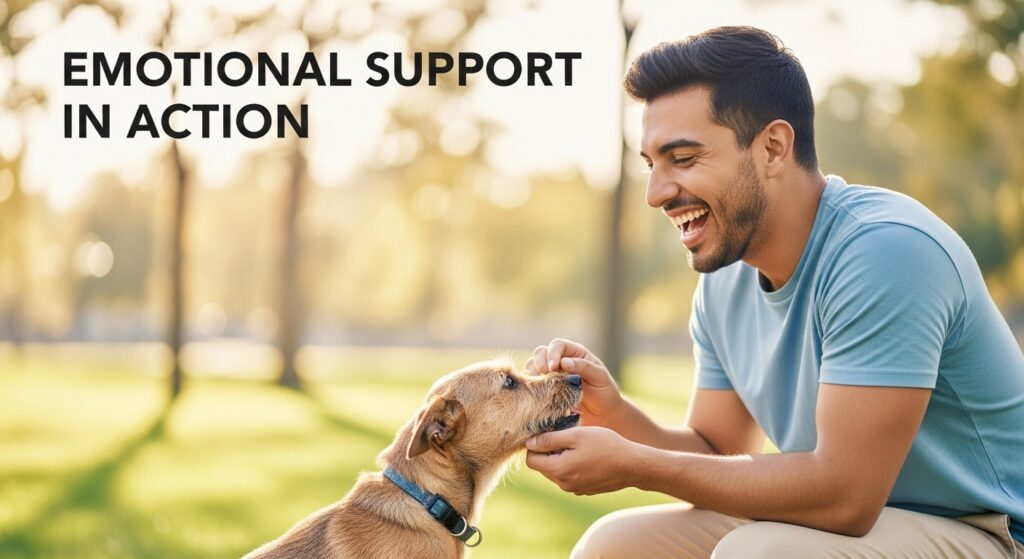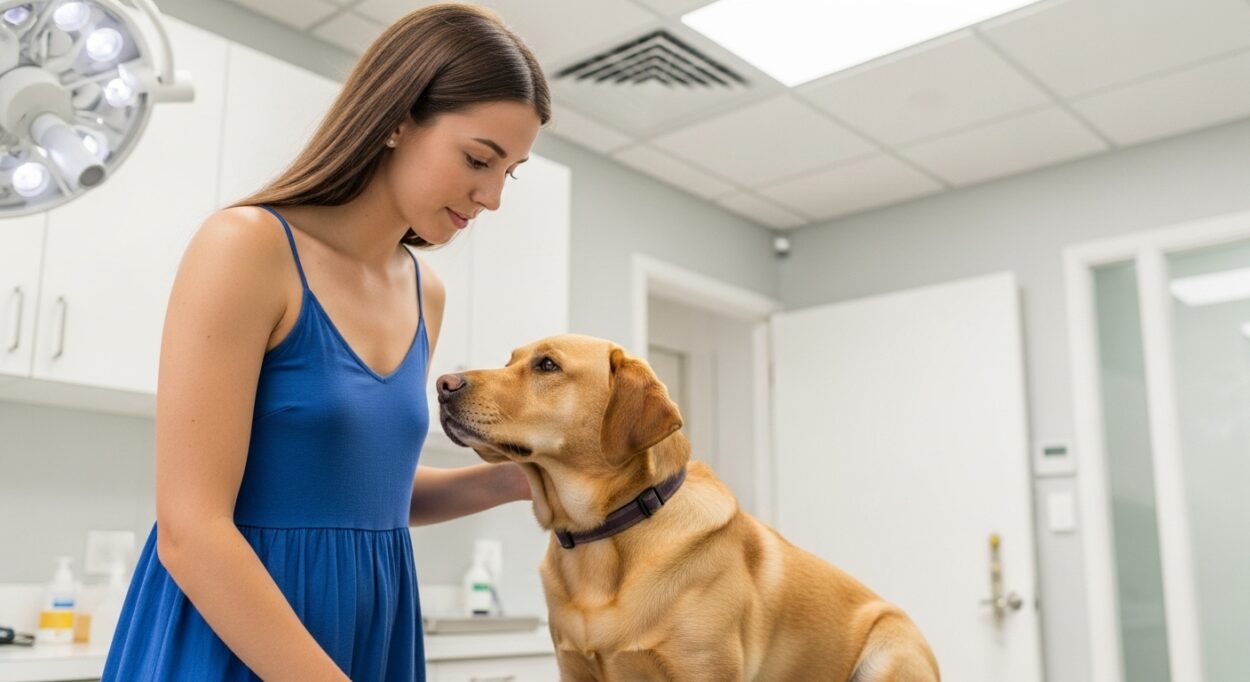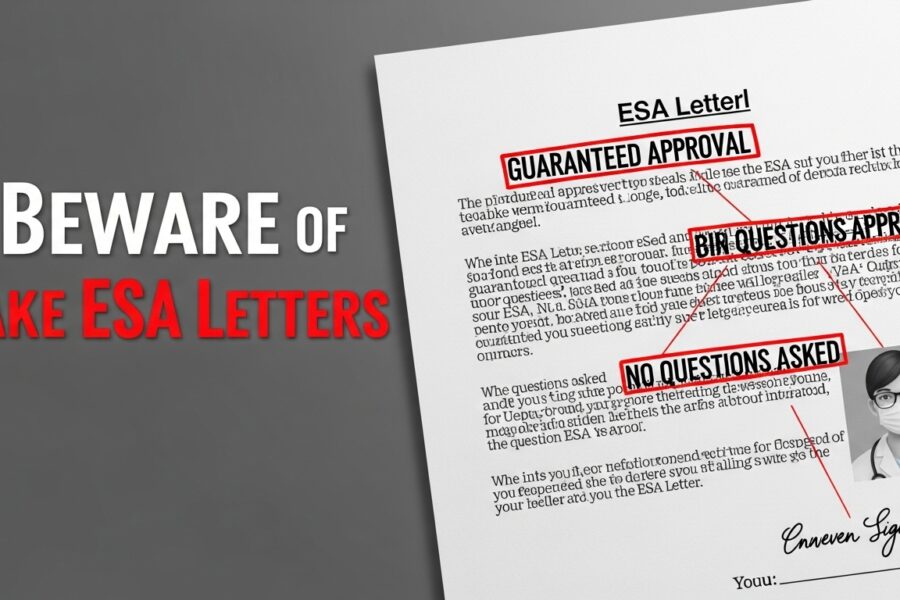Table of Contents
Introduction
In recent years, emotional support animals (ESAs) have become a topic of real conversation—for good reason. If you’ve ever wondered how an ESA could help with life’s emotional ups and downs, you’re not alone. Emotional support animals do much more than just keep you company; they can make a significant difference in your mental well-being, daily routine, and overall happiness.
In this post, we’re exploring the top benefits of having an emotional support animal, drawing on research, real-life experiences, and the latest mental health insights for 2025. If you’re considering qualifying for an ESA, or simply want to learn more, you’ll find everything you need to know right here.

What is an Emotional Support Animal (ESA)?
An emotional support animal is a pet prescribed by a licensed mental health professional to help manage symptoms of emotional or psychological disorders. Unlike service animals, ESAs do not require specific task training—they provide comfort simply by being there.
Common ESAs include dogs, cats, rabbits, and even birds. It’s the bond, not the species, that provides the benefit!
1. Reduces Feelings of Anxiety and Stress
One of the main benefits of emotional support animals is their proven ability to ease anxiety and stress. Studies show that the simple act of petting or cuddling an animal can lower your heart rate, decrease stress hormones, and help you feel calmer. When panic or stress strikes, the presence of an ESA can ground you in the moment, making difficult days a little easier.

2. Provides Companionship & Fights Loneliness
Isolation and loneliness can worsen symptoms of depression, especially for those living alone. Having an ESA provides companionship and unconditional love, making it easier to get through lonely or tough moments. The daily responsibility of caring for an animal also instills purpose, routine, and motivation to get up each day.
3. Supports Emotional Regulation & Mood
ESAs are great at helping people manage big emotions. Whether it’s sadness, mood swings, or frustration, interacting with your animal can release “feel good” chemicals in your brain—like serotonin and oxytocin. Over time, many ESA owners report feeling more stable and positive emotionally.

4. Encourages Healthy Habits & Physical Activity
Especially if your ESA is a dog, daily walks, playtime, and feeding routines encourage a healthier lifestyle. Exercise, fresh air, and even the basic act of getting out of bed to care for your animal can improve energy and reduce depressive symptoms. It’s all about building small, healthy habits that support your emotional recovery.
5. Creates Opportunities for Social Connection
Animals are great conversation starters—walking a dog or visiting the vet often sparks conversations with neighbors, other pet owners, or professionals. This can be really valuable for people who feel socially anxious or withdrawn, offering low-pressure ways to connect.
6. Reduces Symptoms of PTSD, Depression, and Other Disorders
Many people with PTSD, depression, or chronic anxiety report significant symptom relief thanks to their ESA. While not a replacement for therapy or medication, the calming presence of an animal is a powerful companion in a holistic mental health plan.
7. Provides Structure and Responsibility
Caring for an ESA adds structure to your day—feeding schedules, walks, vet visits, and playtime. For those struggling with depression-related lethargy or lack of motivation, having a routine can be a life-saver.

8. Nonjudgmental Support—Always
One of the best aspects of an ESA? Your animal loves you no matter what. Their support is nonjudgmental; whether you’re having a meltdown or celebrating a win, their comfort stays the same. This acceptance can be incredibly healing if you’re struggling with shame, stigma, or feeling “different” due to mental health struggles.
How to Get an Emotional Support Animal
If you believe you could benefit from an ESA, the next step is to talk to a licensed mental health professional. They can determine if an ESA is right for your situation, provide guidance, and (if appropriate) write you an ESA letter—the document you’ll need for legal protection and housing rights.

Frequently Asked Questions (FAQ)
Q1: Do emotional support animals have legal protection?A: Yes! With a valid ESA letter, you’re protected under the Fair Housing Act and certain other laws, so you can live with your animal even in “no pets” housing. However, airlines and public places have their own policies as of 2025.
Q2: Which animals can be ESAs?A: Any animal that provides comfort, though most are dogs or cats. The key factor is the emotional support they provide, not the type of animal.
Q3: Do ESAs need special training?A: No special training is needed (unlike service animals). Your pet must simply be safe and manageable in housing situations.
Q4: How do I qualify for an ESA letter?A: You must have a diagnosed mental or emotional disability and a licensed mental health professional must determine that an ESA would help your well-being.
Q5: Is an ESA the same as a service dog?A: No. Service dogs are trained for specific tasks for people with disabilities and have broader public access rights. ESAs provide comfort but don’t have the same access.
Q6: Can having an ESA replace medication or therapy?A: No—an ESA can be an important part of your support system, but should not replace professional treatment for mental health.
Conclusion
The benefits of having an emotional support animal go far beyond companionship—they can impact every part of your mental and emotional wellbeing. If you or someone you know is struggling, exploring the possibility of an ESA might be a compassionate step forward.
Thinking about qualifying? Read our 2025 ESA Letter Guide for step-by-step help!








Sign up